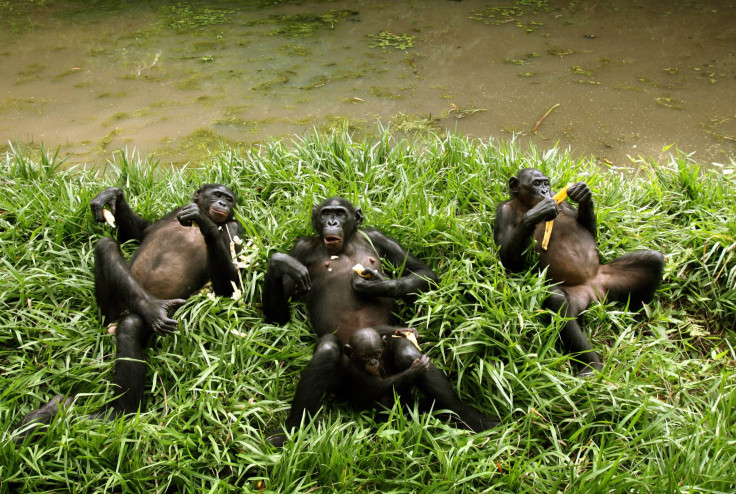Researchers Say Bonobos Have An Innate Ability To Keep A Musical Beat

Bonobos have rhythm, say researchers in Florida.
Bonobo apes are closely related to the chimpanzee and share 98.4 percent of their genetic makeup with humans.
Researchers built a “bonobo-friendly” drum that can withstand 500 pounds of pressure, chewing and general heavy abuse at the hands of the 4-foot-tall apes. The primates pounded the drum at a blistering 280 beats per minute, a tempo that the bonobos prefer, and the rate at which humans speak syllables.
The apes were able to pick up the tempo and beat the drum along to it. Psychologist Edward Large, who worked on the project, said, “It's not music, but we’re slowly moving in that direction.”
The research suggests that humans evolved the innate ability to keep a beat as a function of social bonding. This study, Large says, demonstrates the possibility that the common ancestor to humans and bonobos had this ability.
While closely related to the chimpanzee, bonobos are known to be more peaceful and are extremely social beings. They have more developed regions of the brain associated with empathy, anxiety and sensing distress in others.
Their brains also have a thick connection between the amygdala, which is associated with aggression, and the ventral anterior cingulate cortex, which helps control impulses. That means bonobos may be better at controlling aggressive, impulsive behavior than many other apes, including chimps.
Large and his colleague Patricia Gray, who is a biomusic program director at UNC Greenboro, say they want to see if bonobos keep a beat with one another in the wild, such as when one beats on a hollow tree. “That’s really coordination,” says Large, “If your brain rhythms are literally able to synchronize to someone else’s brain rhythms, that’s what communication is potentially all about.”
The International Union for Conservation of Nature estimates there are between 30,000 and 50,000 bonobos left in the world. They are native only to a relatively small lush jungle region in the Democratic Republic of the Congo. They are considered endangered by the IUCN.
© Copyright IBTimes 2025. All rights reserved.






















